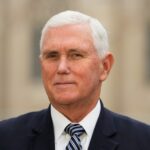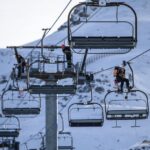
Poor communication between local and federal law enforcement contributed to the mounting security failures that led to the assassination attempt on former President Trump, experts say.
Nearly 90 minutes after law enforcement spotted the would-be assassin, Thomas Matthew Crooks, the 20-year-old managed to evade law enforcement and climb onto a rooftop with a direct line of sight to the former president. He opened fire at the Butler, Pennsylvania rally site, striking Trump in the ear, killing an audience member and critically injuring two others.
Text messages revealed local law enforcement officers shared information with each other as Crooks caught their attention before the shooting. Acting Secret Service Director Ronald Rowe Jr. testified at a joint Senate oversight hearing on Tuesday, though, that information about Crooks was not relayed from local to federal officers.
“On the surface, it seems like a clear communications failure,” Michael Verden, a former Secret Service agent and the founder of the Lake Forest Group, a security firm, told Fox News Digital. “I’ve done these events with presidents, and you have to have a strong, seamless communications plan.”
TRUMP SHOOTING: TIMELINE OF ASSASSINATION ATTEMPT
The communication breakdown became apparent after text messages between local law enforcement officers revealed that they had spotted Crooks 90 minutes prior to the shooting and flagged him as a suspicious individual. Despite escalating pictures of Crooks to command, the would-be assassin managed to evade capture.
“Anybody with any authority at that rally needs to be able to talk to one another,” Verden said. “Butler County and the Secret Service should have been talking to one another.”
TRUMP ASSASSINATION ATTEMPT FORMED FROM ‘CAREFUL PLANNING,’ SCOPING OUT RALLY SITE, FBI SAYS
“They didn’t have, what we call, a joint command center,” Verden said. “You could have had state, local and federal representatives in one location all sharing what their people on the ground were encountering.”
“All roads lead back to communication,” he said.
Verden expressed his surprise that no one approached Crooks, who was stationed by the American Glass Research building before the shooting. The former Secret Service agent said that the agency has a department that tackles “this exact scenario.”
“We have a protective intelligence team, and it’s typically a Secret Service agent and a local law enforcement officer who are working together,” he said.
“They are there for one reason – to approach any and all suspicious people,” he said.
“I’m pretty confident that there were protective intelligence teams at that site to guide teams at that site,” he said. “And if there weren’t, that is a huge inconsistency.”
TRUMP ASSASSINATION ATTEMPT: NEW TEXTS SHOW LOCAL POLICE SCRAMBLE TO ASSIST WITH COVERING RALLY
Charles Marino, a former supervisory special agent for the Secret Service and a senior advisor for the Department of Homeland Security, told Fox News Digital that the events on July 13 highlighted “both the worst and the best of the agency.”
“There was a catastrophic failure of the overall security planning and implementation leading up to and including this fateful day, which would ultimately expose additional cracks in the areas of communication, coordination, and overall strained and limited resources of the agency,” he said.
Marino said that the acts of courage that the agents revealed during the immediate aftermath of the shooting reveal why the Secret Service is “worth fixing.”
“While the incident in Butler is one of the worst-case scenarios for the agency, the best of the Secret Service was called upon to serve as the last line of defense in response to failures in the advance process,” he said.
“The selfless acts of courage and determination demonstrated by Secret Service agents who immediately responded to the sounds of gunfire to shield former President Trump with their own bodies while the gunfire continued, and the actions and skill of Secret Service counter snipers are what make the Secret Service worth fixing – the undeniable dedication to the mission, people, and country they protect.”








